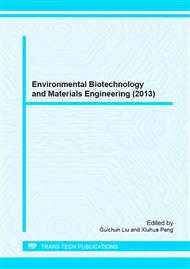p.356
p.360
p.365
p.370
p.375
p.380
p.386
p.390
p.397
Effect of Water Body Morphology on Phytoplankton Biomass and Species Composition
Abstract:
Environmental variables, phytoplankton biomass and species composition in Nanhu Lake in Yingdong Village, Chongming Island were monitored from August 2010 to September 2011. The relationship between environmental variables and population variation of phytoplankton was discussed. The results showed that water body morphology was the key factor leading to the variation of phytoplankton community. In river-type waters the level of phytoplankton biomass was generally higher than that in lake-type waters, especially in summer. During the period of seasonal change, in river-type waters Cyanophyta dominated longer with the succession from Cyanophyta to Chlorophyta and Bacillariophyta occurred later than that in lake-type waters. Redundancy analysis (RDA) indicated that the morphology of enclosed waters had influence on phytoplankton biomass and species composition. One of the mechanisms may be that water body morphology could have impact on the growth and species dynamics of phytoplankton indirectly by affecting nutrient concentrations.
Info:
Periodical:
Pages:
375-379
Citation:
Online since:
September 2013
Authors:
Keywords:
Price:
Сopyright:
© 2013 Trans Tech Publications Ltd. All Rights Reserved
Share:
Citation:


